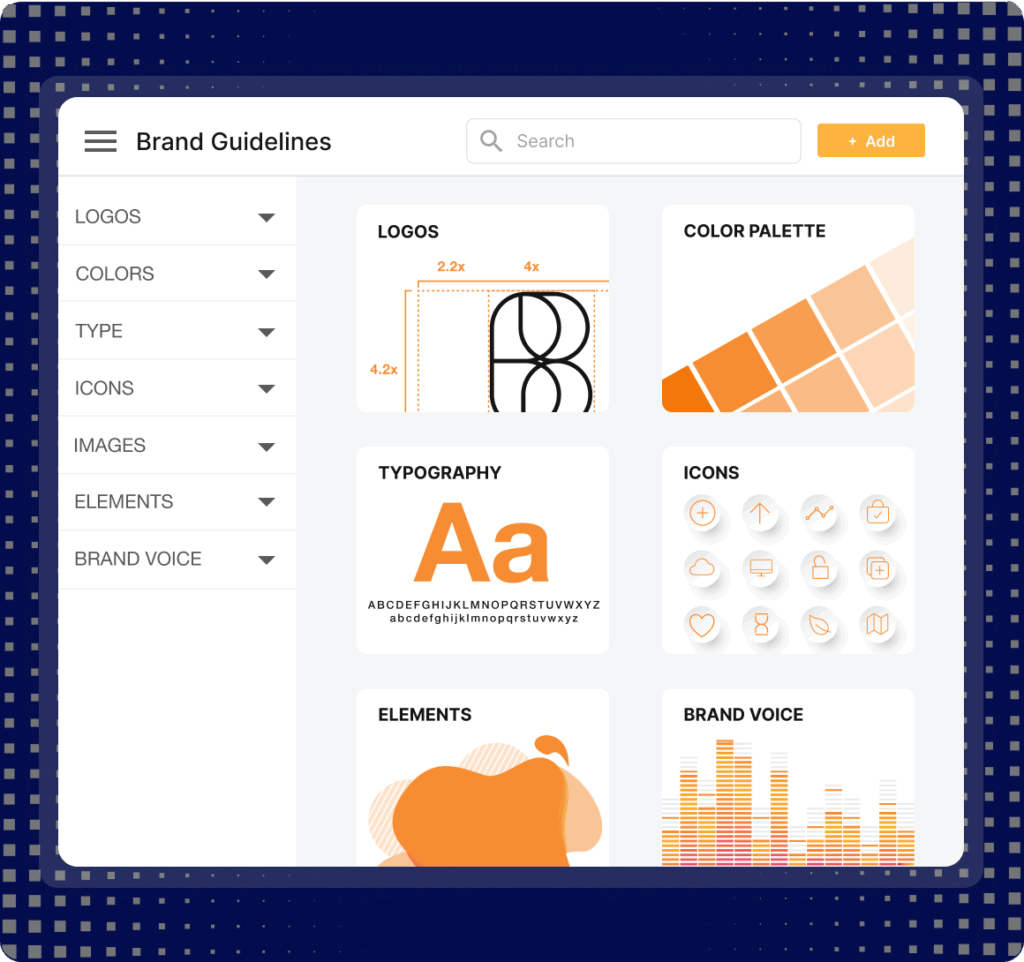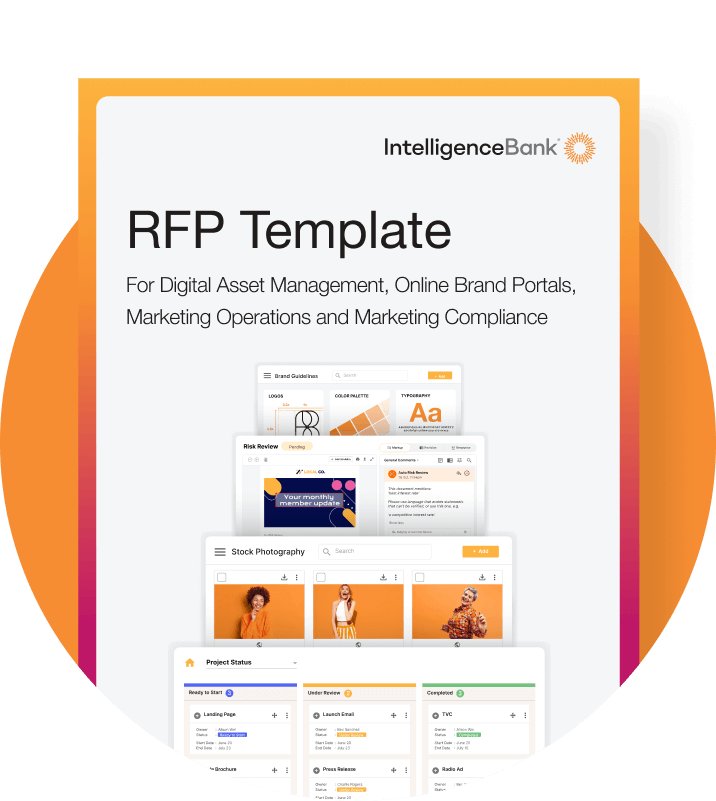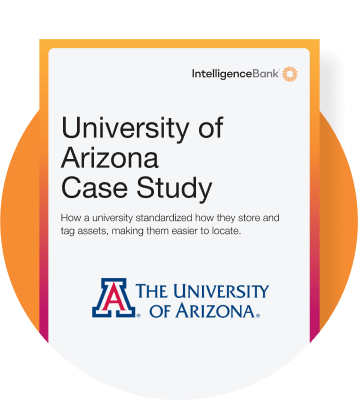Expanding into a new market, launching new product categories, or securing a merger deal opens a whole new can of worms for your branding. Without a clear, effective, and dynamic method to structure your portfolio, your brand line-up can spiral fast..
Brand architecture is the structure of the relationships between a master brand and its subsidiaries. It creates a framework for businesses to manage multiple brands under the same roof. Brand management software provides an all-in-one platform to control the aspects that matter most to branding: Identity, content risk management, equity, marketing efficiency and scalability.
This article will explore key brand architecture models, decision-making frameworks, and management strategies — and how centralizing your brand management in one space can clarify your marketing.
Understanding Brand Architecture
Brand architecture shows how a business’s brands, products, and services fit together in the same ecosystem. It defines the role of the master brand and each of its subsidiaries, specifies the relationships between them, and renders distinct brand identities.
Think of your brand architecture like a theatre. The theatre itself is your leading brand, and the rooms inside — the ticketing office, the auditorium, backstage — are your sub-brands, catering to different functional needs. When everything’s signposted and well-organized, the audience, performers, and employees know where to go, contributing to a positive experience and the theatre’s overall reputation.
A well-executed brand architecture helps consumers understand how your sub-brands connect to your main brand. It also guides marketing decisions and, in doing so, strengthens brand equity.

Why Does Brand Architecture Matter?
An interconnected and logical brand architecture acts in several capacities, all of which are geared to support growth. Here’s how:
- Clear positioning and purpose: Your brand architecture helps people understand your master brand and its subsidiaries in the way you want them to. It achieves clarity for audiences and internal stakeholders alike.
- Effective brand equity transfer: When all of your brands are distinct, yet clearly connected (for instance, Coca-Cola and Coke Zero), brand equity transfer is more efficient. This strengthens your overall brand perception.
- Scalable marketing efforts: By evidently linking new sub-brands to your master brand, you can instantly carry credibility and consumer trust into new industries. Virgin Records, for example, evolved into airlines (Virgin Atlantic), gyms (Virgin Active), and mobile (Virgin Mobile) without having to start from zero with each expansion.
- Coherent brand identity: Regardless of which brand your consumers access, it has the look and feel of the parent brand. Apple does this well, delivering a clean, seamless experience across the iPhone, MacBook, and Apple Music.
- Simplified audience understanding: A well-defined brand architecture means your audiences know which sub-brand to connect with. Disney Animation, Marvel, and Star Wars all sit under the Disney brand umbrella, but it’s easy to identify what’s kid-friendly and what’s adults only.
Particularly if you’re working in highly regulated or multi-brand environments, strategic brand management is critical to ensure stakeholders understand how everything fits together.
3 Various Brand Architecture Models
There are generally three ways to structure your brand portfolio.
Below, we’ll explore these branding architecture models, accompanied by examples you’ll undoubtedly recognize. As you lay the pathway for your brand strategy, weigh the benefits and risks of each to explore which model makes the most sense.
Branded House
The Branded House structure entails one master brand with all its extensions carrying a unified brand identity. It’s the most common brand architecture strategy. Here, the organization itself is the master brand (think Apple and Virgin, from the examples above), and it owns several brand extensions that feature the same name or logo (e.g., Apple Music, an extension of Apple, or Virgin Atlantic, an extension of Virgin).
This model is an “all-in-one” deal, allowing space for growth. Endorsed brands can leverage the leading brand’s reputation while keeping all subs operating under the same guidelines and strategy.
Benefits:
- Coherent identity: The branded house model enables you to target diverse audiences while maintaining a cohesive identity.
- Leverages brand reputation: Visual clarity means that audiences automatically associate master brand qualities with the sub-brands.
- Preserves resources: It’s also more cost-effective, as there’s only one branding strategy that applies to all subsidiaries.
Risks:
- Perception transfer: Because the different brands under the parent company’s umbrella are closely affiliated, a single crisis can quickly circulate reputational damage across other subsidiaries.
- Customer confusion: There’s also a risk of diffusion to the brand identity and confusion among consumers. Reputation management and marketing compliance are essential.
Use cases:
The branded house model is standard in industries where trust and consistency are the cost of entry, such as:
- Healthcare
- Finance
- Tech
House of Brands
In a house of brands model, the parent company owns multiple brands, each with a distinct brand identity, including a unique name, logo, message, target audience, and market. Unlike the branded house architectural model, audiences may or may not be aware of the connection between a sub-brand and its parent.
While not affiliated with brand identity, the corporate brand’s involvement with a sub-brand in this model is typically structured around investment or administration.
CKE Restaurants Holdings, Inc. (CKE) is an example of a house of brands model. You might not know the organization, but surely its subsidiaries, Carl’s Jr. and Hardee’s, ring a bell. Between the two brands, CKE operates and runs 3,900 franchised or company-operated restaurants across 42 foreign countries and 44 U.S. states. Although both brands are fast-food chains, they each have a distinct identity and primarily serve different audiences.
Benefits:
- Custom brand positioning: There’s no direct correlation between sub-brands (or from any sub-brand to the parent brand), making portfolio diversification and increased reach more attainable.
- Greater market flexibility: An organization has the freedom to expand into new markets without impacting other brands under its umbrella. There’s space to play with product and service offerings, pricing, and marketing.
- Insulated risk: With no direct correlation between separate brands, shortcomings in one won’t necessarily reflect in others.
Risks:
- Operations stuck in second gear: When not managed effectively, multiple identities can lead to policy-heavy operations, longer approval processes, and content checks that drag — just to ensure everything’s on-brand.
- Harder to leverage existing brand equity: You can’t lean on parent‑brand equity to upswing new launches.
- Fragmented marketing: Each brand requires unique campaigns, budgets, and creativity, often involving multiple agencies that run the marketing.
Case study:
How CKE resolved fragmented marketing
CKE met the challenge of fragmented marketing head-on. Without an efficient process for its 3,900 franchisees to access digital marketing assets, the corporate brand’s marketing team became buried under stacks of content requests. Its marketing team needed a solution — and fast.
The parent company settled on a brand management solution, featuring a digital asset management system and a brand portal. This solution provided franchisees with a centralized online repository for self-serve marketing collateral. It also offered buffer room for CKE’s marketers to continue generating assets with a more streamlined workflow.
Use cases:
- FMCG and CPG giants handling dozens of products.
- Global companies needing cultural nuance in aspects like visual identity or messaging.
- Private‑equity portfolios where you want each business to stand on its own.
Hybrid Brand
The hybrid brand architecture combines elements of both a branded house and a house of brands. You keep a clear master brand at the center— lending its name, reputation, and visual elements — while concurrently running sub‑brands that either carry a parent endorsement or operate independently.
How it works:
- Endorsed extensions sit directly under the master brand, as is the case with Coca‑Cola Zero and Diet Coke. They wear their own name and logo but nod to the parent via shared colors, an attribution, or a seal.
- Standalone sub‑brands live alongside the master without any visible connection (like Fanta and Minute Maid). However, they still tap into the parent company’s distribution, R&D, and budget.
In this scenario, Coca‑Cola is the anchor. Diet Coke and Coke Zero each target distinct tastes and health preferences; both are branded as Coke products but carry their own identities. Fanta and Minute Maid look like completely different brands, but they still benefit from Coca‑Cola’s global reach and credibility.
Benefits:
- Leverages parent equity: Every sub‑brand gets a jumpstart from your master brand’s recognition (and often, purse strings).
- Custom brand positioning: You can experiment with new products or audiences under a semi‑detached identity — without risking the core brand’s reputation.
- Balanced risk: If one sub‑brand blips, consumers still trust the master brand and other extensions.
Risks:
- Potential brand confusion: Too many visual or verbal conventions can blur the lines. This creates confusion among customers and can put brand equity at risk.
- It’s challenging to leverage existing brand equity: Teams require the resources to support a coherent brand strategy and the needs of individual extensions.
- Complex oversight: You have to define clear brand‑usage rules — when to lean on the parent and when to let the sub‑brand fly solo. That usually comes with intensive workflows and sign‑off processes.
Use cases:
- Global consumer conglomerates that handle flagship products and experimental offshoots.
- Companies post‑acquisition wanting to honor acquired brands’ heritage while gradually integrating them into their overarching story.
- Legacy businesses modernizing their structure, who want to keep the old-school feel alive while sub‑brands experiment with modern takes or regional nuances.
The advantages and disadvantages described above can help you understand the best brand architecture strategy to lead your brand, but as you might’ve guessed, it’s not as simple as choosing a strategy and letting it ride. To determine the best way forward, you also need to consider where your brand stands currently and where you want to take it.
So, for the million-dollar question: How do you know which brand architecture model is the right one?
How to Choose the Right Brand Architecture Model
Your brand architecture model should add value to your current offerings while strengthening your portfolio.
Below, we’ll explore the elements to consider before committing:
- Market position and customer expectations: Are consumers buying because of your brand name, like Apple, or are your products strong enough to stand alone? The answer will shape how closely you connect your brands.
- Risk tolerance and reputation control: If one product goes south, can your main brand handle the repercussions? Or do you need separation to protect the rest of your portfolio?
- Scalability: If you have acquisitions or rebranding in the pipeline, a re-architecture may be on the cards. You’ll need to know that your chosen structure can stretch with future growth goals.
- Global vs. regional flexibility: Will a single brand voice work everywhere, or do local audiences need something culturally relevant? Getting this wrong can undermine market entries.
Making Your Brand Architecture Operational: Management Considerations
It’s one thing to decide to re-architect your brand; it’s another to implement the process. As your portfolio grows, so does the number of logos, templates, images, campaign assets, and approval processes. Without a clear brand management strategy, marketing can get thrown out of orbit fast.
IntelligenceBank’s brand management platform houses all your brand assets, marketing materials, and guidelines, ensuring consistent brand communication across all channels. With everything located in one centralized hub, it’s easy for teams to self-serve the latest approved content, no matter which market they’re in. A brand management platform keeps marketing workflows moving while protecting brand equity, reputation, and customer loyalty as you get the ball rolling. Here’s what you can expect:
- Instantly up-to-date brand guidelines: Brand portals provide 24/7 global access to current brand guidelines and assets.
- Self-service function: Portals empower stakeholders with instant access to commonly used assets, including logos, fonts, icons, templates, illustrations, and approved photography. This capability cuts the time marketers spend on unproductive tasks, like responding to requests.
- Controlled access and asset distribution: You can manage who has visibility over assets by controlling access to files or pages based on individuals, groups, or roles. It’s also possible to create a custom portal for each sub-brand.
- Integration capabilities: Connect with your existing tech stack, CMS, and applications, ensuring your team reaps the full benefits of the platform while using their familiar tools.
- Flexible management options: The portal is also fully integrated with the broader content operations platform, including digital asset management, marketing work management, and marketing compliance capabilities. Use as much or as little as you need.
How Brand Management Software Optimizes Workflows
Ultimately, how your organization structures their brand is immaterial. What you need are tools that can simplify governance, speed up approvals, and scale without chaos. Here’s some of the most common questions we’re asked about our platform:
1. “How can it help us stop wasting time on asset requests and approvals?”
When teams or franchisees constantly ask for logos, templates, or campaign kits, productivity plummets. IntelligenceBank’s customizable self-serve portals give approved stakeholders instant access to the latest approved assets—no back-and-forth emails.
Example: A global CPG company reduced asset requests significantly by allowing regional teams to download pre-localized ads directly from their brand portal.
2. “How can we make it easier to enforce brand consistency across our markets?”
Manual compliance checks don’t scale. Our online brand guidelines, DAM and workflows ensure every team—from Tokyo to Toronto—uses the right logos, fonts, and messaging.
Feature highlight: Set approval workflows for high-risk assets (e.g., press releases) with mandatory sign-offs before download. Allow approval free use of editable templated assets.
3. “Our M&A activity is exploding. How do we onboard new brands without IT headaches?”
Mergers mean legacy assets, new stakeholders, and fragmented systems. IntelligenceBank integrates with your tech stack (CMS, CRM, design tools) to unify assets in one hub.
Use case: A financial services firm merged 3 acquired brands in 6 months by creating sections for each with some shared compliance rules.
4. “Why can’t we just put a PDF of our brand guidelines online?”
You can but it won’t be very functional. A static PDF can’t monitor compliance, include rich media like video and audio, host live assets, or track usage. IntelligenceBank’s portal centralizes all brand materials—from logos to video templates—with real-time updates, access controls, and audit trails to ensure consistency without manual oversight.

Manage Your Brand Architecture Strategically
As your brand expands, so does the complexity of managing it. A clear, coherent brand architecture is essential for maintaining and growing your portfolio efficiently. With the right brand management system, you can sustain brand-aligned marketing and consistent messaging while keeping the risks in check.
IntelligenceBank’s brand management platform is your all-in-one space to organize your branded assets and marketing workflows. It supports creative teams as they collaborate and consistently deliver on-brand campaigns, positioning you right where you need to be. Reach out to our team to learn how we can further support your brand’s strategic management.




